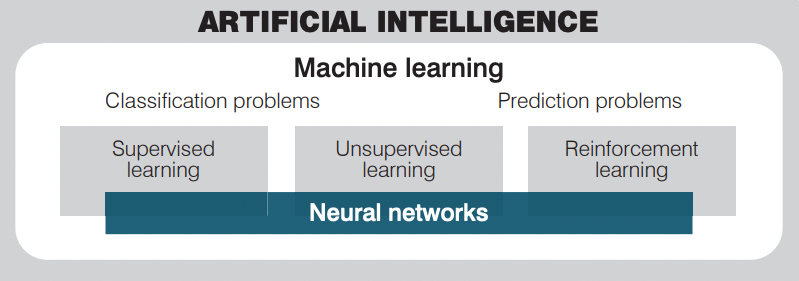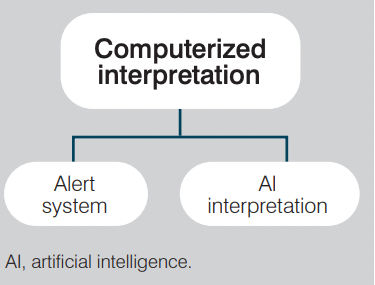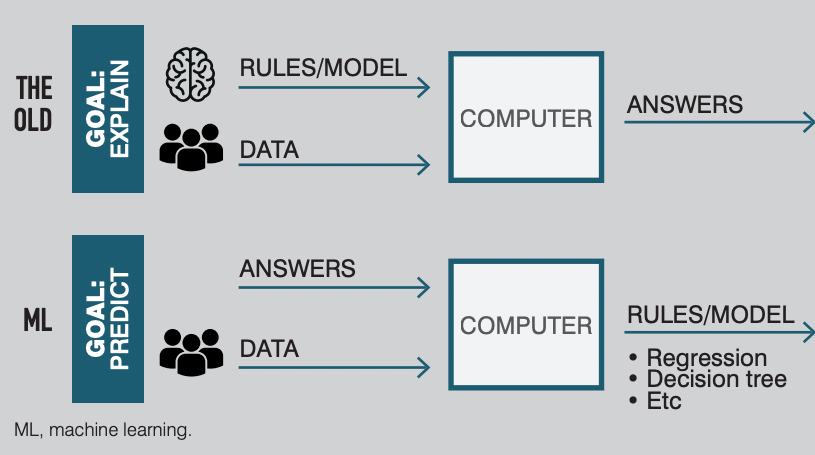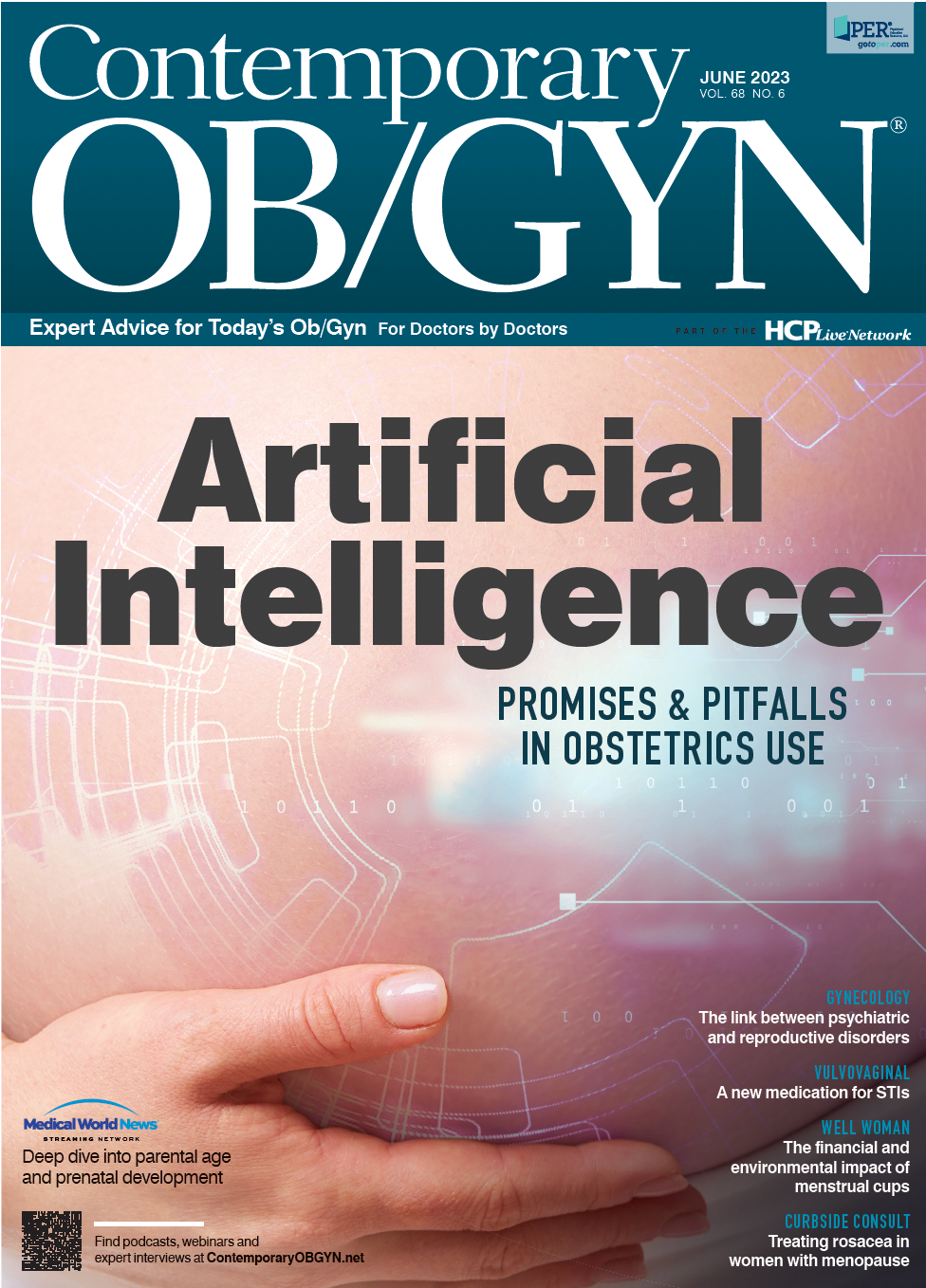Artificial intelligence steps into obstetrics
Technology may be used in ultrasounds, fetal heart rate interpretation, and prediction of adverse clinical outcomes.
ChatGPT, a new form of generative artificial intelligence (AI) that can create novel products based on previous training data, was launched in November 2022. Since then, ChatGPT has taken the medical education world by storm with its ability to draft insurance referral letters, pass the United States Medical Licensing Examination, and generate fictitious but real-appearing chest x-ray images. ChatGPT also can generate scientific abstracts that fool editors at scientific journals.1 Many of us already rely on AI when we use smart home devices, real-time navigation software, or online shopping recommendations. AI has made similar inroads into clinical medicine, but we may be less aware of the ways AI has become an integrated part of our practice and the high likelihood that we will increasingly depend on AI to conduct clinical medicine.
AI is commonly defined as “the theory and development of computer systems able to perform tasks that normally require human intelligence.”2 A subset of AI is machine learning, which is when computer learning occurs on its own rather than by being given prescribed rules. Machine learning is commonly then subdivided into (1) supervised learning, where the target labels are defined in advance, (2) unsupervised learning, where target labels are not defined, commonly used for clustering, such as in handwriting recognition, and (3) reinforcement learning, which describes an iterative process of the machine learning from past mistakes. Spanning all of these subtypes of machine learning is the concept of neural networks. They first weigh predictive variables, then vary the output via activation functions, and ultimately generate predictions whose relative accuracy is relayed back for the network to learn for the next cycle, just like an actual neuron does (Figure 1).
Already frequently used in hospital operations and insurance risk prediction, AI continues to gain a foothold in clinical medicine. For example, in pathology and laboratory medicine, it is common for pathologists to rely on initial triage of Papanicolaou test cytology abnormalities with an AI-driven, automated system.3 Similarly, radiology workflows routinely utilize AI to better triage study acuity (eg, moving studies read as higher risk for abnormality to the front of the line) and for study protocoling and optimization (eg, limiting radiation when an AI-determined adequate image has been obtained).4 These are just some examples of the hundreds of clinical AI algorithms or applications that have been submitted—and approved—by the FDA for medical care. Comparatively, obstetrics remains in its infancy in terms of incorporating AI into clinical care. Although it has been only 3 years since the last review of this topic in Contemporary OB/GYN, the use of AI in obstetrics has expanded tremendously since then. In this review, we will first describe 3 areas in which AI has been most effectively utilized in our field—obstetric ultrasound, fetal heart rate interpretation, and prediction of adverse clinical outcomes—before concluding with comments on the potential positives and perils of perinatal AI.
AI in obstetrics
Ultrasound
In a review titled “Introduction to artificial intelligence in ultrasound imaging in obstetrics and gynecology,” Drukker described several potential uses of obstetric ultrasound, many of which have seen fruition:5,6 (1) probe guidance, (2) fetal biometric plane finder, (3) anomaly scan completeness, (4) anomaly highlighting, and (5) utilization all of these capabilities to better (and in real-time) educate sonographers and obstetric trainees alike.6 Since Drukker’s publication, AI in obstetric ultrasound has proven adept at identifying biometric planes and the basic presence or absence of anatomic malformations, completing an anatomy ultrasound, and even classifying a full fetal echocardiogram.7-10 Recently, a neural network trained to estimate gestational age from blindly obtained ultrasound sweeps of the gravid abdomen was found to generate an estimated gestational age more closely aligned to actual gestational age than an estimated gestational age of trained sonographers conducting standard fetal biometry.11 Taken together, it is likely that the use of AI in obstetric ultrasound will continue to increase, driven by innovation, analogy from other radiologic fields, and clinician interest.
Fetal heart rate interpretation
Attempts to use computerized systems in fetal heart rate (FHR) interpretation have been in development almost since the availability of continuous electronic fetal monitoring.12 Application of AI to FHR interpretation can be classified into 2 general goals: (1) automating alerts for a prescribed classification system and (2) identifying novel patterns of abnormalities that may predict fetal distress (Figure 2).
Although automation of alerts for a classification system intended to predict fetal distress have shown similar promise as alert automation in electronic medical records for vital sign abnormalities in adult patients, the results in both clinical and research practice have been less impressive. The largest trial of a computerized alert system to date was the INFANT study (NCT02010710), a randomized controlled trial of 46,042 pregnant patients throughout 24 hospitals in the United Kingdom and Ireland. In this study, there was no difference in neonatal or maternal outcomes between those given the adjunctive clinical decision support via the INFANT system and those who were treated without this system.13
Conversely, evaluation of fetal heart rate tracings for pattern has shown slightly more promise. Georgieva and her colleagues at the University of Oxford in England have developed the OxSys system, a model based on multimodal convolutional neural networks, which has identified novel findings such as decelerative capacity, a term describing the combination of frequency, depth, and slope of any decelerations in the fetal heart rate. Similarly, Zhong et al have developed CTG-Net, a system to both identify novel patterns was well as permit centralized remote fetal monitoring, an approach which has shown promise in US trials as well.14,15 Though these systems’ ability to identify novel patterns is intriguing, they are not ready for widespread adoption. Additional studies are needed to understand the optimal implementation of AI-based recommendations, particularly those generated via deep learning models that identify patterns or findings that may not be visible to the clinician observer’s eye.
Predictive modeling
Obstetricians are no strangers to using clinical data in predictive models that aim to identify those at risk for adverse perinatal outcomes. Over the past few years, AI has been increasingly used to generate these models.16 Predictive modeling using machine learning AI differs from traditional predictive modeling. In machine learning, the computer learns clinical patterns to make predictions, whereas in traditional predictive modeling, humans program the clinical data into the model. In other words, the role of the computer in traditional modeling versus machine-learning modeling is flipped: Where it previously was only used as a computational aide, it now develops the model itself (Figure 3).
AI models have been developed to predict everything from preeclampsia to shoulder dystocia, from postpartum hemorrhage to postpartum depression, and from optimal mode of conception to optimal mode of delivery.17-23 One newly developing type of AI predictive modeling is natural language processing, which attempts to read and interpret text the same way a human would. Natural language processing has seen application in using clinician notes to predict severe maternal morbidity, as well as to mine social media data for pregnancy drug safety, but its potential extends far beyond these early forays.24,25
Promise and perils
“AI is not going to replace physicians, but physicians who use AI are going to replace physicians who don’t, and that may be the cautionary tale.” —Keith Horvath, MD, former National Institutes of Health director, Cardiothoracic Surgery Research Program
We hope that we have demonstrated the tremendous potential AI holds for being able to improve disease diagnosis, facilitate care for patients, and optimize clinician workflows in obstetrics. But for as many potential benefits as there are with AI, there are also legitimate concerns. In her book Weapons of Math Destruction: How Big Data Increases Inequality and Threatens Democracy, Cathy O’Neil, MD, describes the most dangerous forms of AI as those that are opaque, can scale, and create feedback loops, all of which describe potential characteristics of AI in clinical medicine.26 We saw examples of this in a much simpler rule-based algorithm—the vaginal birth after cesarean (VBAC) calculator. Because Black and Hispanic patients have historically been more likely to have been recommended cesarean delivery, this behavior was then codified as a prescriptive in the calculator and marking either (or both) of these races as positive yielded lower predicted probability of success. The potential for AI to inadvertently—or intentionally—worsen racial disparities in obstetrics and other fields has caused a number of organizations to adopt guidance to promote FATE (fairness, accountability, transparency, and ethical principles) in AI. In addition, the US federal government has attempted to formalize guidance of using AI in health care: The Agency for Healthcare Research and Quality recently released draft comments on, “Impact of Healthcare Algorithms on Racial and Ethnic Disparities in Health and Healthcare.”27 However, until this guidance is formalized, it is up to clinicians to understand the potential harms of indiscriminatory application of any algorithm, whether it is generated through traditional models or AI-based techniques.
We encourage all obstetric models to critically examine all novel technologies, including AI. Specific to predictive modeling, clinicians should evaluate predictive modeling through the lens of how they were developed, specifically paying attention to the risk of bias from traditional or AI-driven approaches. We should ask ourselves the following questions: 1) Is the population this model was developed with similar to my patient population? 2) Was the way in which the prediction was targeted meaningful? For example, several models attempt to identify a diagnosis based only on International Classification of Diseases, Tenth Revision coding, which may be fraught with both false negatives and positives. Before deploying any predictive modeling—or AI, in general—on a large scale, it is critical that clinicians stay in engaged with and understand these considerations.
In conclusion, it is clear that AI will change the practice of medicine as we have known it. It is incumbent upon us as clinicians to ensure it does so for the better.
Figure 1. Artifi cial Intelligence and Subtypes

Figure 2. Types of AI Applied to Fetal Heart Rate Interpretation.

Figure 3. Use of Computers in Classic Rule-Based Prediction Problems vs Machine Learning

References
1. Else H. Abstracts written by ChatGPT fool scientists. Nature. 2023;613(7944):423. doi:10.1038/d41586-023-00056-7
2. IA J. Emerging Library Technologies. Chandos Publishing; 2018:1-22.
3. Thrall MJ. Automated screening of Papanicolaou tests: a review of the literature. Diagn Cytopathol. 2019;47(1):20-27. doi:10.1002/dc.23931
4. van Leeuwen KG, de Rooij M, Schalekamp S, van Ginneken B, Rutten MJCM. How does artificial intelligence in radiology improve efficiency and health outcomes? Pediatr Radiol. 2022;52(11):2087-2093. doi:10.1007/s00247-021-05114-8
5. The real power of AI in women’s health 2023. Voluson Club. March 3, 2023. Accessed May 10, 2023. https://www.volusonclub.net/us/ai-innovations
6. Drukker L, Noble JA, Papageorghiou AT. Introduction to artificial intelligence in ultrasound imaging in obstetrics and gynecology. Ultrasound Obstet Gynecol. 2020;56(4):498-505. doi:10.1002/uog.22122
7. Chen Z, Liu Z, Du M, Wang Z. Artificial intelligence in obstetric ultrasound: an update and future applications. Front Med (Lausanne). 2021;8:733468. doi:10.3389/fmed.2021.733468
8. Xie HN, Wang N, He M, et al. Using deep-learning algorithms to classify fetal brain ultrasound images as normal or abnormal. Ultrasound Obstet Gynecol. 2020;56(4):579-587. doi:10.1002/uog.21967
9. Baumgartner CF, Kamnitsas K, Matthew J, et al. SonoNet: real-time detection and localisation of fetal standard scan planes in freehand ultrasound. IEEE Trans Med Imaging. 2017;36(11):2204-2215. doi:10.1109/TMI.2017.2712367
10. Arnaout R, Curran L, Zhao Y, Levine JC, Chinn E, Moon-Grady AJ. An ensemble of neural networks provides expert-level prenatal detection of complex congenital heart disease. Nat Med. 2021;27(5):882-891. doi:10.1038/s41591-021-01342-5
11. Pokaprakarn T, Prieto JC, Price JT, et al. AI estimation of gestational age from blind ultrasound sweeps in low-resource settings. NEJM Evid. 2022;1(5):10.1056/evidoa2100058. doi:10.1056/evidoa2100058
12. Jauniaux E, Prefumo F. Fetal heart monitoring in labour: from pinard to artificial intelligence. BJOG. 2016;123(6):870. doi:10.1111/1471-0528.13844
13. INFANT Collaborative Group. Computerised interpretation of fetal heart rate during labour (INFANT): a randomised controlled trial. Lancet. 2017;389(10080):1719-1729. doi:10.1016/S0140-6736(17)30568-8
14. Zhong M, Yi H, Lai F, et al. CTGNet: Automatic analysis of fetal heart rate from cardiotocograph using artificial intelligence. Maternal-Fetal Medicine. 2022;4(2):103-112. doi:10.1097/fm9.0000000000000147
15. Martin JK, Price-Haywood EG, Gastanaduy MM, et al. Unexpected term neonatal intensive care unit admissions and a potential role for centralized remote fetal monitoring. Am J Perinatol. 2023;40(3):297-304. doi:10.1055/s-0041-1727214
16. Grobman WA, Sandoval G, Rice MM, et al; Eunice Kennedy Shriver National Institute of Child Health and Human Development Maternal-Fetal Medicine Units Network. Prediction of vaginal birth after cesarean delivery in term gestations: a calculator without race and ethnicity. Am J Obstet Gynecol. 2021;225(6):664.e1-664.e7. doi:10.1016/j.ajog.2021.05.021
17. Tsur A, Batsry L, Toussia-Cohen S, et al. Development and validation of a machine-learning model for prediction of shoulder dystocia. Ultrasound Obstet Gynecol. 2020;56(4):588-596. doi:10.1002/uog.21878
18. Jhee JH, Lee S, Park Y, et al. Prediction model development of late-onset preeclampsia using machine learning-based methods. PLoS One. 2019;14(8):e0221202. doi:10.1371/journal.pone.0221202
19. Venkatesh KK, Strauss RA, Grotegut CA, et al. Machine learning and statistical models to predict postpartum hemorrhage. Obstet Gynecol. 2020;135(4):935-944. doi:10.1097/AOG.0000000000003759
20. Wang S, Pathak J, Zhang Y. Using electronic health records and machine learning to predict postpartum depression. Stud Health Technol Inform. 2019;264:888-892. doi:10.3233/SHTI190351
21. Lipschuetz M, Guedalia J, Rottenstreich A, et al. Prediction of vaginal birth after cesarean deliveries using machine learning. Am J Obstet Gynecol. 2020;222(6):613.e1-613.e12. doi:10.1016/j.ajog.2019.12.267
22. de Souza HCC, Perdoná GSC, Marcolin AC, et al. Development of caesarean section prediction models: secondary analysis of a prospective cohort study in two sub-Saharan African countries. Reprod Health. 2019;16(1):165. doi:10.1186/s12978-019-0832-4
23. Wong MS, Wells M, Zamanzadeh D, et al. Applying automated machine learning to predict mode of delivery using ongoing intrapartum data in laboring patients. Am J Perinatol. Published online December 29, 2022. doi:10.1055/a-1885-1697
24. Clapp MA, Kim E, James KE, Perlis RH, Kaimal AJ, McCoy TH Jr. Natural language processing of admission notes to predict severe maternal morbidity during the delivery encounter. Am J Obstet Gynecol. 2022;227(3):511.e1-511.e8. doi:10.1016/j.ajog.2022.04.008
25. Mohammadhassanzadeh H, Sketris I, Traynor R, Alexander S, Winquist B, Stewart SA. Using natural language processing to examine the uptake, content, and readability of media coverage of a pan-Canadian drug safety research project: cross-sectional observational studyJMIR Form Res. 2020;4(1):e13296. doi:10.2196/13296
26. O’Neil C. Weapons of Math Destruction: How Big Data Increases Inequality and Threatens Democracy. Crown; 2017.
27. Impact of Healthcare Algorithms on Racial and Ethnic Disparities in Health and Healthcare 2022. Agency for Healthcare Research and Quality. January 25, 2022. Accessed March 3, 2023. https://effectivehealthcare.ahrq.gov/products/racial-disparities-health-healthcare/protocol

S4E1: New RNA platform can predict pregnancy complications
February 11th 2022In this episode of Pap Talk, Contemporary OB/GYN® sat down with Maneesh Jain, CEO of Mirvie, and Michal Elovitz, MD, chief medical advisor at Mirvie, a new RNA platform that is able to predict pregnancy complications by revealing the biology of each pregnancy. They discussed recently published data regarding the platform's ability to predict preeclampsia and preterm birth.
Listen
